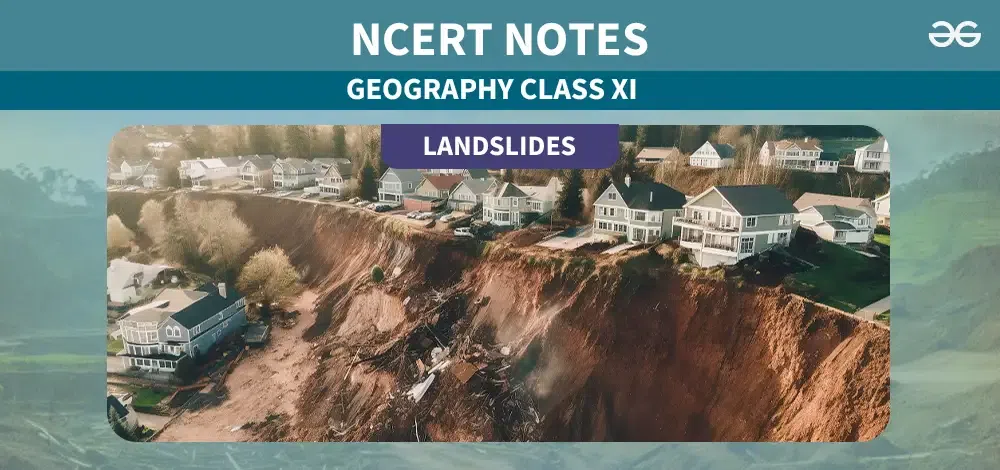
|
|
Landslide is a subpart of the Class 11 Geography Chapter Natural Hazards and Disasters: Causes, Consequences, and Management. This subpart describes the Landslide and the different factors related to it. A landslide is a natural hazard that is caused by the mass movement of different natural materials like rock and soil. It is a natural process of erosion. The landslide happens due to disturbances in the stability of a slope when gravity overcomes it through the friction force. In this article, we are going to discuss the Class 11 Notes Geography on Landslides in detail.  Landslides| Class 11 Geography Notes Types of LandslidesFour types of landslides can caused by due to different reasons. Let’s discuss this in detail. Falls LandslidesA fall landslide happens when some material collapses from a cliff or a steep slope. In this type of landfall, the elements start to free fall by bouncing and rolling. Topple LandslidesThe Topple Landslides happens due to the rotation of the rock or earth that forwards far away from the slope. This type of landslide is slow and needs a steep slope to slide. Slides Type LandslideThis type of landslide happens when the materials move through the downslope along with the slip surface. These landslides are deeper than other types of landslides. Spread Type LandslideSpread Type Landslide happens when the mass movement happens to the downwards on a particular slope. This type of landslide happens in the hillslopes. Causes of LandslideThere are so many causes of the landslide as mentioned below.
Landslide Prone Area and Vulnerability ZonesThere are some Landslide Prone Area and Vulnerability Zones as mentioned below. Very High Vulnerability ZonesVery High Vulnerability Zones are highly unstable areas that also receive high rainfall and earthquakes. Examples: Himalayas, Andaman, Nicobar, North East Region, Western Ghats and Nilgiri. High Vulnerability ZonesHigh Vulnerability Zones are the less unstable and other factors are much more lower than the Very High Vulnerability Zones. Examples: Assam, Andhra Pradesh, Maharashtra, Karnataka, and Bihar. Moderate and Low Vulnerability ZonesModerate and Low Vulnerability Zones are the fewer precipitation areas and some places that fall under them, contain the mining areas. Examples: Jharkhand, Orissa, Chhattisgarh, Madhya Pradesh, Maharashtra, Andhra Pradesh, Karnataka, Tamil Nadu, Goa, and Kerala. Also Read:
Class 11 Notes Geography Landslides- FAQsWhat is landslide Class 11 geography?
What are the 3 major factors of landslide?
What are 2 facts about landslides?
What is the biggest landslide in history?
What are the characteristics of a landslide?
How can landslides affect the earth?
What are the effects of landslides in India?
|
Reffered: https://www.geeksforgeeks.org
| Class 11 |
Type: | Geek |
Category: | Coding |
Sub Category: | Tutorial |
Uploaded by: | Admin |
Views: | 18 |